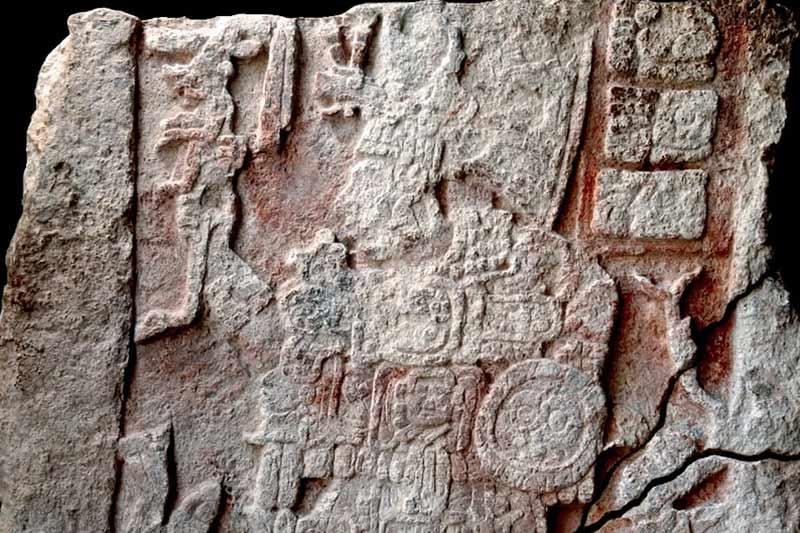Tulane archaeologists help unearth Maya monuments
Archaeologists with the La Corona Regional Archaeological Project in Guatemala, who in 2012 discovered the second known reference to the so-called “end date of the Maya calendar”, have announced more significant finds from the same site.
The discoveries, announced this week by archaeologists from Tulane and Del Valle universities, include a stucco mask found inside a nearly 70 foot pyramid at the site of the El Achiotal, project in Guatemala. The pyramid, which dates back to the 1st century BCE, is the tallest building at the site.
The approximately 6 foot tall mask, still covered in its original polychrome paint decoration, depicts the Principal Bird Deity, an important character in the Maya creation myth and integral to early kingship in the Maya lowlands.
“More than half the temple is still to be excavated,” notes Marcello A. Canuto, co-director of the project and Director of Tulane University’s Middle American Research Institute. “This is a beautifully preserved stucco mask from one of the early periods of this interesting site.”
Tulane graduate student Maxime Lamoureux St-Hilaire, a member of the La Corona team, also discovered two hieroglyphic panels in nearly pristine state at the nearby La Corona palace.
Archaeologists also announced important discoveries at the site of Holmul in northern Guatemala.
A team led by Tulane professor Francisco Estrada-Belli excavated two tombs that were untouched by looters. The tombs contained a number of pottery pieces and other objects made of materials precious to the Maya including a jade jewel inscribed with the name of a distant overlord. The finds add more evidence to the existence of a regional power ruling over the Classic Maya lowlands.
“There are still many cities like these still lying under the forest that hold many secrets about the Maya history, in spite of all the damage caused by centuries of natural erosion and looting that still happens as we speak,” says Estrada-Belli. “We must find them and protect them before they vanish.”
The La Corona Regional Archaeological project and the Holmul Archaeological Project are partially supported by the US Department of Interior, the Alphawood and Pacunam Foundations, and the National Geographic Society.
Click here for more high resolution photos from both projects.

